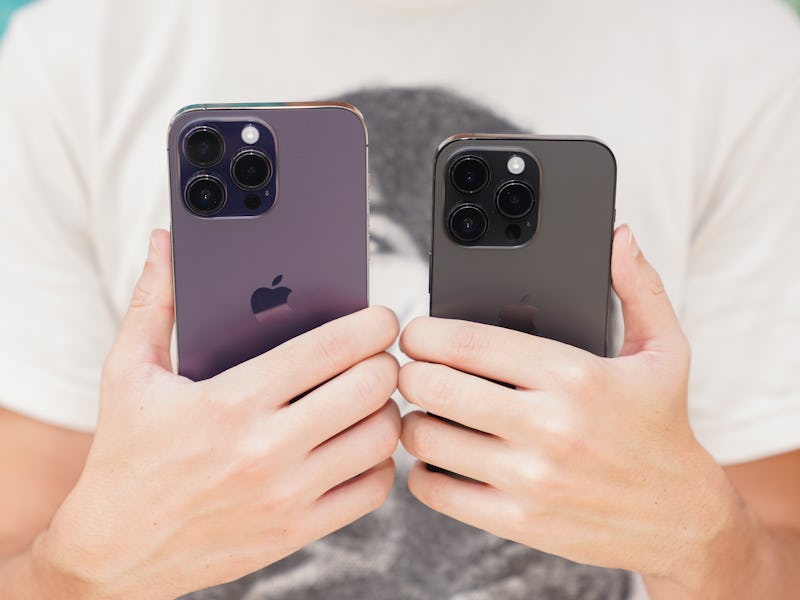Apple Explains Why It Won’t Make iPhones With Replaceable Batteries
This could be the second round of the European Union’s bout with regulating Apple.

The European Union recently approved new rules that would require easy-to-replace batteries with appliances, including smartphones. It’s a step in the right direction in terms of the right-to-repair movement, but major phone makers like Apple are unlikely to roll over.
John Ternus, Apple’s senior vice president of hardware engineering, in an interview on YouTube channel Orbit (via Gadget Tendency), recently outlined why it’d be really difficult to make iPhones with removable batteries again. One of those major reasons: water-resistance.
“We absolutely believe that if people need a battery replacement, there should be a safe and effective way to do that,” Ternus said in the interview. “You can make an internal component more maintainable by making it discrete and removable, but that actually adds a potential point of failure. Using the data, we can understand which parts of the phone need to be repaired and which parts are actually better made so reliable that they never need to be repaired. It’s always a kind of balance.”
WHAT DOES THE EU’S REGULATION ENTAIL?
The European Parliament overwhelmingly approved the new rules for battery design in June. The new rules call for stricter waste collection targets, minimum levels of materials recovered from waste batteries, and minimum levels of recycled content used with new batteries.
Most importantly, it notes that appliances should have portable batteries that consumers can easily remove and replace at any time during the product’s lifetime.
It’s not the first time that the EU has pushed for certain design requirements — making USB-C mandatory on mobile devices forced Apple to switch to the reversible port for this year’s iPhone 15 series.
HOW DOES THIS IMPACT APPLE’s iPHONE?
If the regulation is approved, it would mean Apple and other smartphone makers like Samsung and Google would have to change their battery design. Apple has done better in terms of improving repairability when it comes to its latest iPhones, scoring a 7/10 on the iFixit scale with its iPhone 14 / 14 Plus series. However, the EU’s legislation could be asking for more, like a pop-out battery that can easily be swapped for a fresh one.
It’s a lot easier to swap batteries on the iPhone 14, but it still requires some know-how.
Apple has not been keen on governments dictating design, previously claiming that the move to USB-C represents government regulation stifling innovation. Considering how similar this latest EU regulation feels, we’re expecting Apple to try to innovate its way out of it.
There is a clause in the text excluding appliances that are “in an environment that is regularly subject to splashing water, water streams or water immersion and that are intended to be washable or rinseable.”
For Apple, it could argue that its iPhones are designed to be water resistant, therefore making it exempt.
“Our iPhones are IP68 rated, so they’re incredibly water resistant,” Ternus said. “We always get these great stories when customers tell us how they accidentally dropped their phone in a body of water and it took them two days to get it out and they are so excited because it still works. To get this level of water resistance, there are a lot of high-tech adhesives and sealants to make everything waterproof but, of course, it makes the opening process a little more difficult. So there is a balance.”
An easily-replaceable battery could conflict with the iPhone’s water-resistant design.
At the end of the day, it all comes down to using a “truly data-driven approach to maintainability” said Ternus. “We want to focus on making sure our customers have easy access to repairing things that are most likely to need repair. Last year in iPhone 14, we redesigned the entire phone, making it with a so-called ‘mid-body architecture’ so that the back glass can be detached, making it much easier to repair if someone breaks the back glass.”
WHAT ARE THE NEXT STEPS?
The proposed regulation is still awaiting final approvals within the EU, so there’s no exact time frame yet as to when the EU will enforce it. For reference, the EU first proposed the USB-C requirement for smartphones in late 2021, later formally adopting it in October 2022. After that, companies had a maximum of two years to comply with the new law.
It could be a few years until we see the EU start putting deadlines related to its easily replaceable battery design. In the meantime, smartphone makers are likely planning their game plan on how their devices fit within the regulation’s requirements.
This article was originally published on